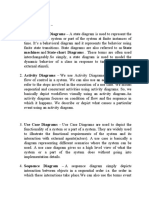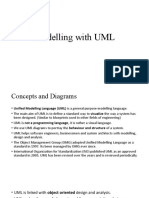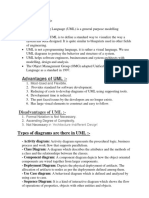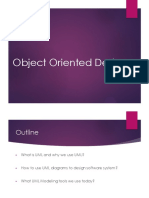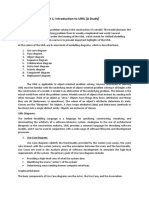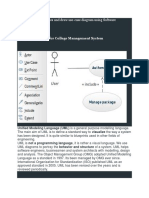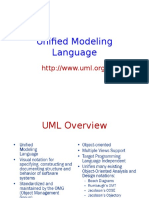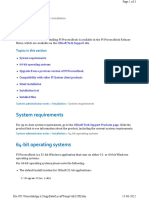0% found this document useful (0 votes)
17 views26 pagesUml Modeling
The document provides an overview of Object-Oriented Analysis and Design, emphasizing the importance of identifying objects and their relationships in system development. It introduces UML (Unified Modeling Language) as a standard modeling tool, detailing various types of diagrams including use case, class, and activity diagrams, which help in visualizing system behavior and structure. Additionally, it explains key concepts such as associations, aggregation, composition, generalization, and specialization in the context of UML modeling.
Uploaded by
sahil mehtaCopyright
© © All Rights Reserved
We take content rights seriously. If you suspect this is your content, claim it here.
Available Formats
Download as DOCX, PDF, TXT or read online on Scribd
0% found this document useful (0 votes)
17 views26 pagesUml Modeling
The document provides an overview of Object-Oriented Analysis and Design, emphasizing the importance of identifying objects and their relationships in system development. It introduces UML (Unified Modeling Language) as a standard modeling tool, detailing various types of diagrams including use case, class, and activity diagrams, which help in visualizing system behavior and structure. Additionally, it explains key concepts such as associations, aggregation, composition, generalization, and specialization in the context of UML modeling.
Uploaded by
sahil mehtaCopyright
© © All Rights Reserved
We take content rights seriously. If you suspect this is your content, claim it here.
Available Formats
Download as DOCX, PDF, TXT or read online on Scribd
/ 26






